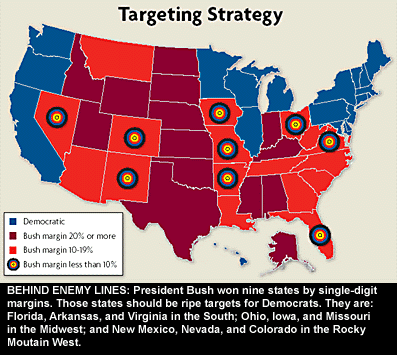I have had a house in Tucson for the past five or six years. It is in Gabriel Gifford’s Congressional district. I know the corner of Ina Road and Oracle Road where the shooting occurred. I know and like Tucson and Arizona. I would rather be living there than here because I have serious fears about California’s future while I think Arizona is now in pretty good hands. They had a housing bubble but they have more sensible people in that state government.
Gabriel Gifford’s district includes some of the most affluent areas of Tucson. To be re-elected, she had to be a “blue dog” Democrat. She has an appealing personal story. Her father is a sheriff of a neighboring county and her husband is an astronaut. I would not have voted for her because she had a very attractive opponent but there was very little of the animosity in that election that there was in other district races. Some of her constituents were unhappy about her healthcare vote. She had gotten the message and voted against Nancy Pelosi for minority leader of the Democrats, one of 17 Democrats to do so.
The press conference by the Pima County sheriff yesterday was disgraceful. I watched the whole thing. He went over and over his theories that harsh political discourse was somehow a cause of the shooting. He repeated the whole mantra three times by my count. Other than that, he provided very little information, for example, declining to give the suspect’s name when everyone with an internet connection knew what it was. I think he may have been reacting to personal distress as he probably knows Ms Gifford’s father and has known her for a long time. I also suspect he is a Democrat as Tucson is a rather left wing city being the site of the University of Arizona. The City Council has been very left wing and several members were defeated in the previous election as they had spent far too much money on frivolous projects, some of which had never been completed.
There is a lot of wild talk on left wing web sites, some of which is being rolled back as Daily Kos and the DNC scrub web sites of similar images and rhetoric as conservative sites and people they are attacking. A lot of it has been scrubbed but some people have found Google caches.
Like this DLC “targeting map.”
There has been a lot of talk about how “angry” Arizona people are. Well, maybe they have reason to be angry. The Obama administration has sued the state to try to stop an Arizona law that merely enforces a federal law that Obama seems disinterested in enforcing. Arizona is overrun with illegals immigrants, drug violence is 60 miles away in Mexico and auto insurance rates are sky high because of car theft. Someone I know had a LoJack system installed in his car. When he realized the car was stolen, the police activated the locator and the car was already 60 miles into Mexico.
Some of the angry rhetoric comes from a sense that the people have lost control of the government since Obama was elected. The health care bill was opposed in every poll of public opinion. The Republican minority was completely opposed. Yet, the bill was passed by procedural maneuvers never before used to pass legislation of this magnitude. As the people have learned more about the bill, they like it less. Nancy Pelosi told us they have to pass it so we can find out what is in it. Yes, the people of Arizona are angry. But it had nothing to do with yesterday’s shooting.
The young man is obviously a paranoid schizophrenic. His ramblings on a You Tube video contain the typical delusions of schizophrenics. He goes on about the government controlling minds through grammar. He appears to be obsessed with grammar and goes on about introducing a new currency for which he will be the Treasurer. These are the delusional ravings of a psychotic. There appears to be some level of disappointment that he is not associated with a political ideology, especially the tea party. There are already think pieces about “violence”, by which they mean talk radio and Fox News, just as Clinton did after the McVeigh bombing in Oklahoma.
By day’s end, the argument that the political right—fueled by anti-government, and anti-immigrant passions that run especially strong in Arizona—is culpable for the Tucson massacre, even if by indirect association, seemed to be validated by the top local law enforcement official investigating the shooting of Rep. Gabrielle Giffords (D).
This refers to that disgusting press conference by the Pima County sheriff. They even have a video of his rant.
Pima County Sheriff Clarence Dupnik, an elected Democrat, at a news conference Saturday evening.
Yup, I guessed right.
One veteran Democratic operative, who blames overheated rhetoric for the shooting, said President Barack Obama should carefully but forcefully do what his predecessor did.
“They need to deftly pin this on the tea partiers,” said the Democrat. “Just like the Clinton White House deftly pinned the Oklahoma City bombing on the militia and anti-government people.”
Another Democratic strategist said the similarity is that Tucson and Oklahoma City both “take place in a climate of bitter and virulent rhetoric against the government and Democrats.”
Isn’t it odd that movies about the assassination of George Bush are not considered too extreme ?
I think Representative Gifford will recover as the gunshot wound track passed from her temple out her forehead, probably missing her brain. A family friend said she is now in induced coma, no doubt to minimize cerebral edema from the contusion to the brain from the shock wave. I don’t know if the Democratic party will recover from its disinterest in debate and its tendency to try to demonize its opponents instead of argue with them.
